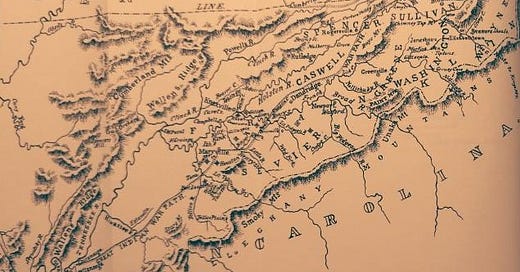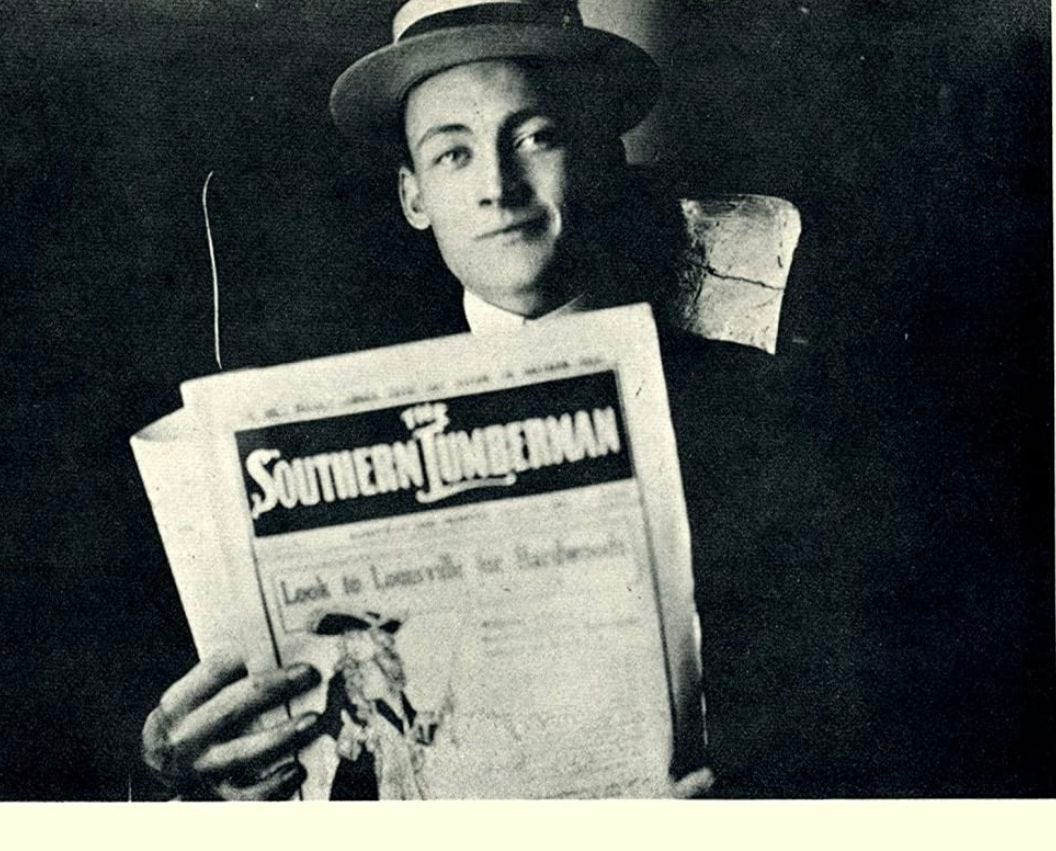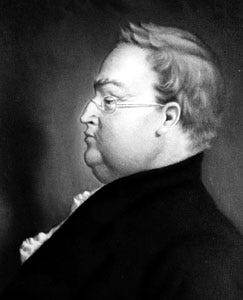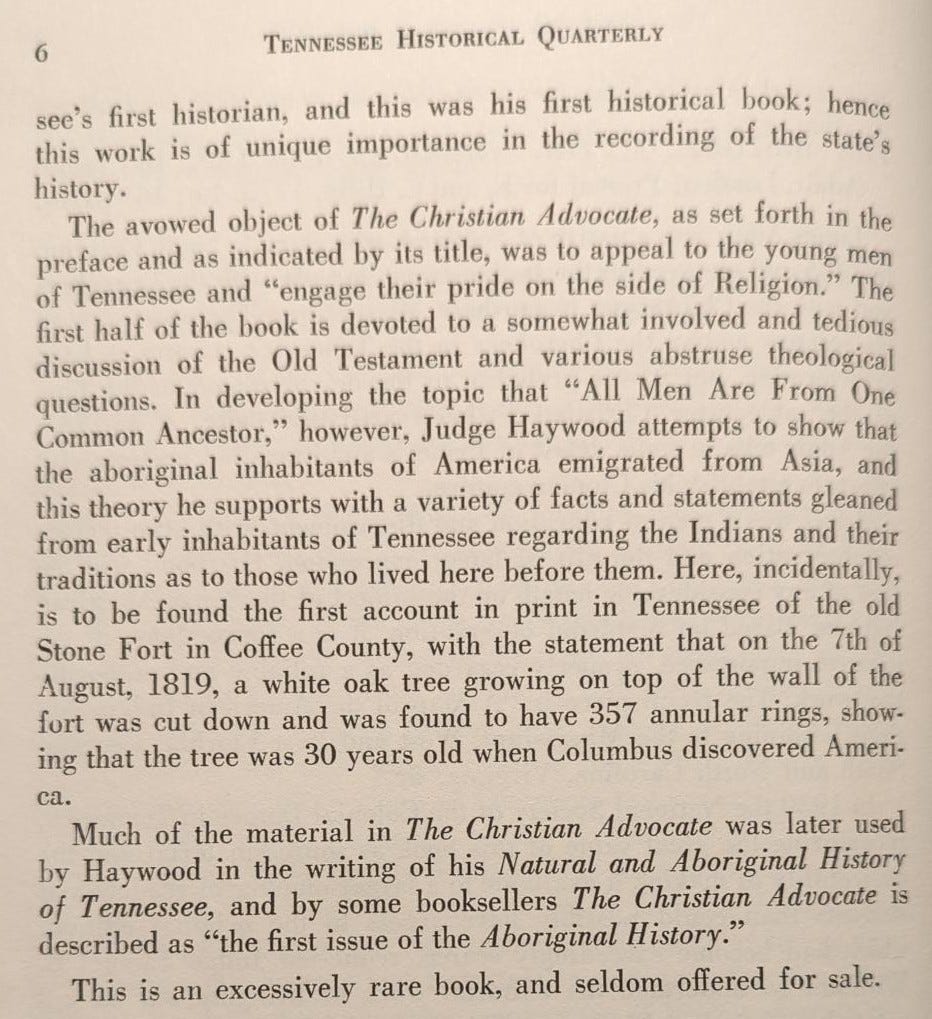Tennessee History: Installment One
Our Project: Its Inspiration, Beginning, Stanley Horn, and John Haywood
An Introduction to the Project and Stanley Horn
I wrote a few days ago on some of the short term goals of this publication. Today I would like to begin the Tennessee History Project. I want to learn more about my state’s history, and I want to make episodes from its history more readily accessible to the people of our sphere. I want to start a journey, and I would love for others to come along with me. Knowing where we are going, I will now provide the materials of where this began. For me, I received the inspiration to do this when I came across a book list on Folk Chain of Memory. The Tennessee historian Stanley Horn came up with this list in 1957. Let’s look at Mr. Horn’s introduction (the photos are of a collected volume of Tennessee Historical Quarterly):
With this introduction, one sees a clear basis for the project. But who exactly was Stanley F. Horn?
He was originally from Davidson County, born at Neeley’s Bend in 1889. Throughout his life, Mr. Horn was associated with the Southern lumber business. By the 1930s, his admiration for Robert E. Lee led him to publish his first book. In 1935, he wrote Boy’s Life of Robert E. Lee. This would lead to more significant works in the late thirties and early forties. Here is a brief bibliography of Mr. Horn’s main works:
The Hermitage: Home of Old Hickory (1938)
Invisible Empire: The Story of the Ku Klux Klan (1939)
The Army of Tennessee: A Military History (1941)
Gallant Rebel: The Famous Cruise of the CSS Shenandoah (1949)
The Robert E. Lee Reader (1949)
The Decisive Battle of Nashville (1954)
In particular, The Army of Tennessee and The Decisive Battle of Nashville have had a lasting impact. He managed not only these publications, but historical magazines and lumber related materials for his whole life. He was even the head of the Tennessee Historical Society for many years. Mr. Horn died in 1980, apparently accidentally, whereupon his library was donated to Vanderbuilt University. It is not immediately clear to me that he received any college degree, though he was honored by multiple universities. There appears to be some vagueness surrounding this subject and his death, which I may research myself. Nonetheless, he is but one in a long line of Tennessee historians. Where does this line begin?
John Haywood: Tennessee’s First Historian
Though various memoirs exist of early travels in Tennessee history, even Hernando de Soto’s account of his 1540 expedition, John Haywood was the first historian proper of the state. Haywood himself was a pioneer. He was born in North Carolina in 1762. In his earlier life, he was known foremost as a legal scholar and jurist. His first works were legal in nature. Here are some of them:
North Carolina Reports (1806)
A Manual of the Laws of North Carolina (1808)
A Revisal of All the Public Acts of the State of North Carolina and of the State of Tennessee (1809)
Duty and Authority of Justices of the Peace (1810)
The Statute Laws of the State of Tennessee (1831, posthumously completed and published by Robert Cobbs)
Haywood moved to Davidson County and quickly established himself as one of the foremost jurists in the emerging state. He was appointed to the Supreme Court of Error and Appeals in 1816. It was after this move to Tennessee and his appointment that he began to write historical and religious treaties. These non-legal works are as follows:
The Christian Advocate (1819)
The Natural and Aboriginal History of Tennessee (1823)
The Civil and Political History of the State of Tennessee (1823)
Apparently, Mr. Haywood had unique influence on J. G. M Ramsey, who wrote Annals of Tennessee. His historical research led to the founding of the first historical society in the state in 1820 called the Tennessee Antiquarian Society. Mr. Hawyood unfortunately died in 1826. Aside from his historical achievements, Haywood County is named after him. You will note that for Stanley Horn’s Tennessee history list, all of John Haywood’s historical works make it. However, if you have seen Chase’s list on Folk Chain of Memory, you will note that one of Mr. Haywood’s works is missing: The Christian Advocate.
Although the work is over 200 years old, in my estimation it has never seen republication or digitization. This obviously makes it extremely rare. Well…that changes today. I have personally made efforts to seek this work’s digitization. I must apologize for the rudimentary condition of this attached work, as I am not a professional book digitizer. Owing to the book’s condition which, and I was able to get my hands on an original 1819 which attributes authorship to simply “A Tennessean,” was quite poor, I was forced to use rope weights and interact with it as little as possible. Also, owing to my own position, I was only able to use a smart phone camera. With that said, I have taken the time to individually photograph the pages, crop them, and collate them, which has resulted in the attached file. I apologize that it is not in a more pleasantly presentable state, but I hope truly that this opens up some avenue of research for someone. I won’t be reviewing The Christian Advocate since The Natural and Aboriginal History of Tennessee is a more full version, but here are Horn’s comments on it. Please, enjoy!










